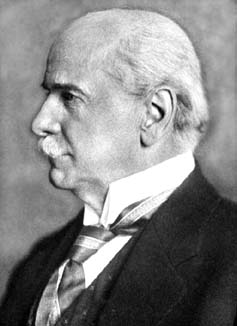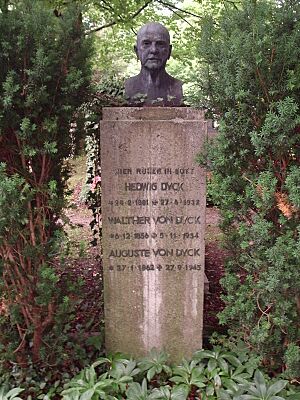Walther von Dyck facts for kids
Quick facts for kids
Walther von Dyck
|
|
|---|---|
 |
|
| 8th Rector of the Technical University of Munich | |
| In office 1919–1925 |
|
| Preceded by | Karl Heinrich Hager |
| Succeeded by | Jonathan Zenneck |
| 1st Rector of the Technical University of Munich | |
| In office 1903–1906 |
|
| Preceded by | Position renamed |
| Succeeded by | Friedrich von Thiersch |
| 7th Director of the Technical University of Munich | |
| In office 1900–1903 |
|
| Preceded by | Egbert von Hoyer |
| Succeeded by | Position renamed |
| Personal details | |
| Born | 6 December 1856 Munich, Kingdom of Bavaria |
| Died | 5 November 1934 (aged 77) Munich, Nazi Germany |
| Nationality | German |
| Education | Technical University of Munich |
| Scientific career | |
| Fields | Mathematics |
| Thesis | Über regulär verzweigte Riemannsche Flächen und die durch sie definierten Irrationalitäten (1879) |
| Doctoral advisor | Felix Klein |
Walther Franz Anton von Dyck (born December 6, 1856 – died November 5, 1934) was an important German mathematician. He was born with the name Dyck, but later received a special honor that added "von" to his name.
Walther von Dyck is famous for being the first to clearly define what a mathematical group is, in the way we understand it today. A group is a set of things with a way to combine them, like numbers with addition, that follows certain rules. He also helped create a field of math called combinatorial group theory. This is where mathematicians study groups by looking at their basic building blocks and how they relate to each other.
Who Was Walther von Dyck?
Walther von Dyck was a student of another famous mathematician, Felix Klein. He worked with Klein on a big project, helping to publish Klein's encyclopedia, which was a huge collection of mathematical knowledge.
Von Dyck also helped edit the writings of Johannes Kepler, a very important astronomer and mathematician from long ago. He was a strong supporter of teaching about technology and engineering. He served as the leader, called a rector, of the Technical University of Munich (which was then called the Technische Hochschule of Munich) multiple times.
Family Background
Walther von Dyck was the son of a Bavarian painter named Hermann Dyck.
What Is His Legacy?
Walther von Dyck's work left a lasting mark on mathematics. Several important ideas and concepts are named after him:
- The Dyck language is used in computer science and formal language theory. It helps describe certain types of sequences, like balanced parentheses.
- Dyck's theorem and Dyck's surface are concepts used in the study of surfaces in mathematics.
- The von Dyck groups, Dyck tessellations, Dyck paths, and the Dyck graph are all mathematical ideas that carry his name.
These names show how much his ideas influenced different areas of mathematics.


